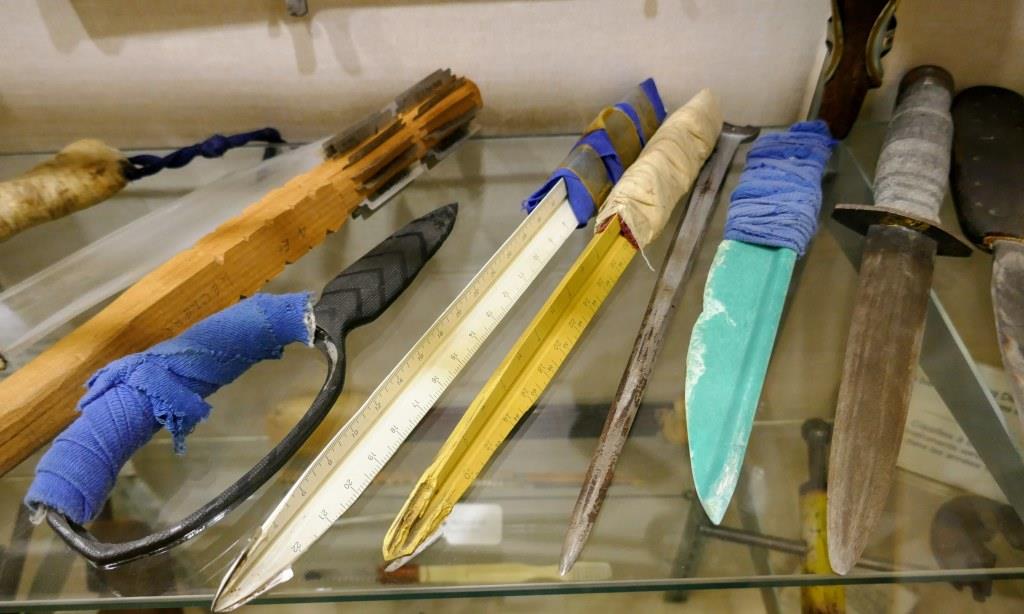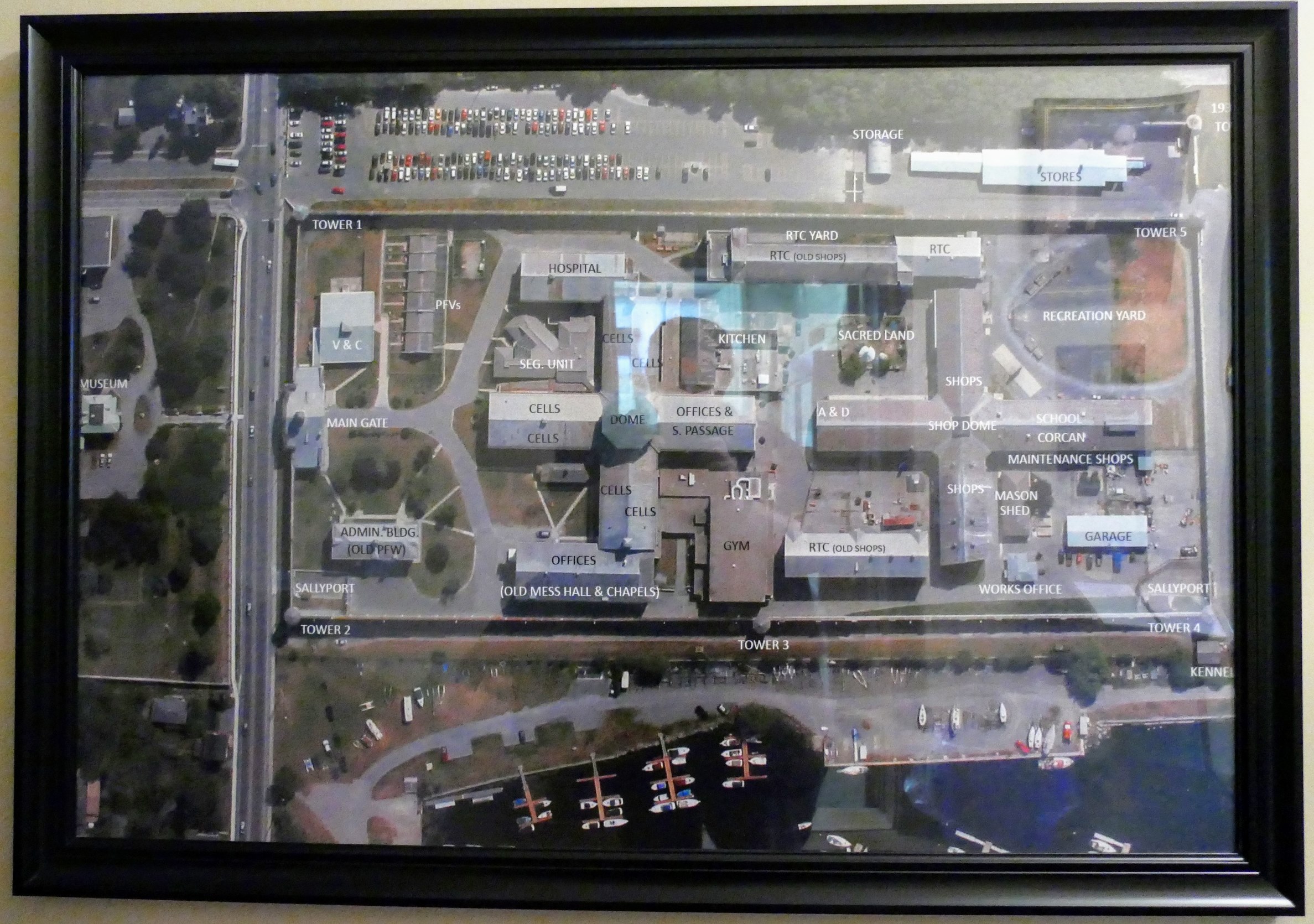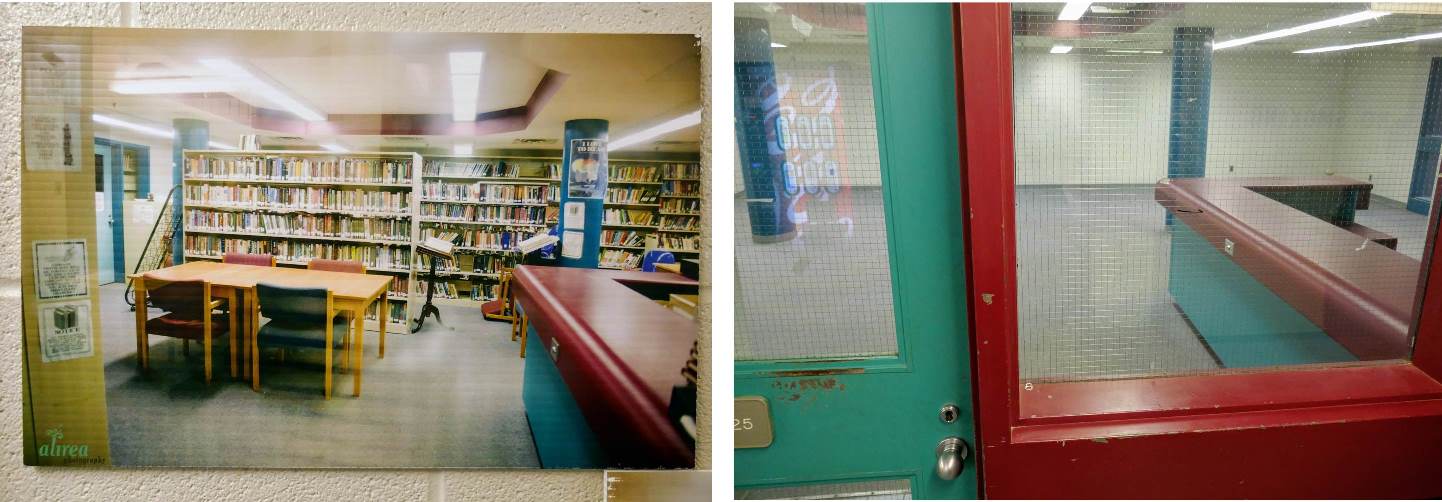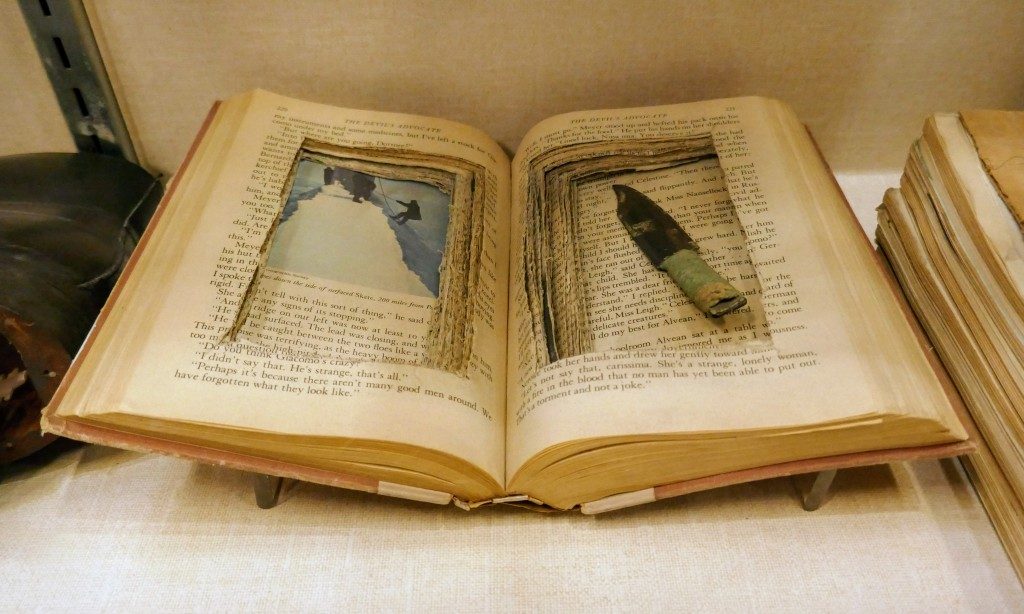For five years in the early ’90s I lived in Kingston, Ontario, and must have gone by Kingston Penitentiary hundreds of times. It was a fully functioning maximum security prison for men then, housing many of Canada’s most dangerous criminals, including sex offenders.
This was a forbidding place to look on with dread and pass quickly. I never dreamed that 25 years later I’d be taking a tour inside.
Before the prison tour, I visited the excellent Canada’s Penitentiary Museum, housed in the former wardens’ residence across the street. One of the highlights was speaking with two of the volunteer staff who are retired Kingston Pen officers. I could have listened to their stories all day.

One thing I learned, from the aerial view of Kingston Penitentiary on the wall at the museum, was how large the prison grounds are (21.9 acres). As the enclosure backs onto Lake Ontario (originally convenient for transportation purposes), it covers a far greater area and has far more structures than I’d realized.

On the fascinating almost two hour tour of Kingston Penitentiary (run by St. Lawrence Parks Commission, not the museum), we covered quite a bit of ground, from the main gate to the recreation yard, both indoors and outdoors.
I was very impressed from the beginning with how well organized the tour was, and the educational and respectful tone established right from the start. Over a number of stops, we heard from five or six more volunteer retired Kingston Pen officers. The tour was not sensational or exploitative in any way, but mindful of the victims and their families.

Though the facility opened in 1835 and is in fact a National Historic Site of Canada (with a plaque!), it only closed six years ago in 2013. This is not ancient history. It is a site with 175+ years of suffering, on the part of inmates, visitors, and staff too.
That said, I found it extremely enlightening to learn about life behind the walls I’d passed so often. Now I’m reading The Door: My Twenty-Six Years Working Inside Canada’s Prisons by Vern Thibedeau (one of our guides!) and can’t put it down.
Check out this 11 minute National Film Board short film Penitentiary for a look inside Kingston Pen in 1951.
Prisoners spend the majority of their days in cells, but they also work—in quarry gangs, on farms, and as tailors and shoe-repairmen. Monthly visitors are allowed, but movements within the prison are tightly controlled.
This film is a revealing portrait of the criminal justice system and its philosophies on recidivism in the middle of the 20th century.
For a look inside Kingston Pen just weeks after it closed in 2013, here is a 13 minute video from urban explorer TikiTrex, which is very much like what I saw a couple days ago.
Canada’s Penitentiary Museum is museum no. 69 in my #100museums challenge (see 100 Museums Challenge).

